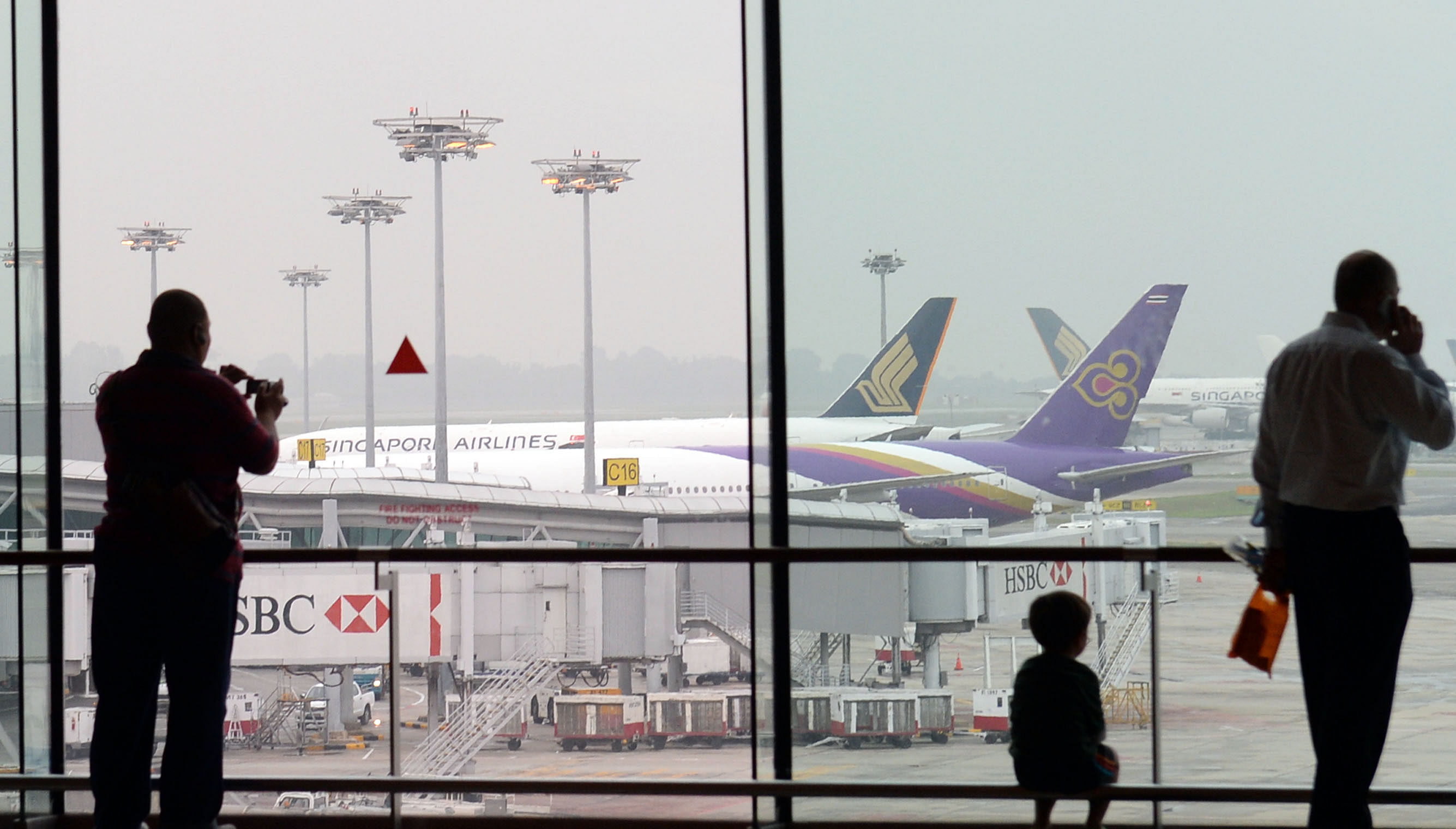KUALA LUMPUR • Standing in for my superiors at an Asean Editors Summit in Malaysia's capital last week, I began my talk on regional integration by mentioning the inaugural issue of Asiaweek magazine, a title that used to be published from Hong Kong.
Now defunct, after Time Inc closed it in 2001 to focus on its main brand, it was a mast at which I spent my salad days in journalism.
Given the breath of life by two brilliant editors who left the hoary Far Eastern Economic Review for the purpose of giving voice to a new Asia, the Asiaweek cover dated Dec 19, 1975, carried the editorial statement of the magazine's founding editor T.J.S. George.
This is what it said:
"The time is historically appropriate. Peace in Indochina has set off a chain reaction affecting all countries and all walks of life. Yesterday's enemies have become today's partners. Realities have changed, and values with them.
"Asiaweek identifies itself with the interests of Asia in general and of South-east Asia in particular. In this regard, we consider the concept that links the Asean countries (Indonesia, Malaysia, the Philippines, Singapore and Thailand) worthy of special attention. The Asean ideal is not only noble; its steady development will be, we believe, of crucial importance to the progress and stability of South-east Asia in the last quarter of this century."
Asean was eight years old at the time and it is noteworthy that Mr George's editorial statement did not include Brunei, which was not an Asean state then. The so-called CLMV countries - Cambodia, Laos, Myanmar and Vietnam - were even further on the Asean horizon as putative members. Besides, Mr George had dared look ahead no further than a quarter of a century.

But 40 years after he wrote his seminal words for his magazine, what a long journey it has been for the South-east Asia concept, I mused to fellow tradesmen.
Vietnam, at the time, was really the name for a war, not the foreign investment-drawing nation it is today that exports US$10 billion (S$13.5 billion) of Samsung smartphones to the world.
Burma was closed to the world, more than a dozen years into its military-run slide that ended with the recent election that returned it to a civilian government helmed substantially by Ms Aung San Suu Kyi. Not just that, Myanmar, as we know it now, is seen as one of the most promising frontier markets. Cellphone towers, those totems of connectivity, dot a landscape where the tallest objects in view used to be the spires of Buddhist pagodas.
Across wider Asia, massive changes would come. Three years after Asiaweek was born, China would embark on reforms that would propel it, in time, to become the world's No. 2 economy. India started its own liberalisation journey 11 years later and so push out South Korea to be Asia's No. 3 economy.
I narrated all this to give my audience some perspective of how far along the road this region has travelled, even as we bemoan its slow progress.
Today, Asia's - and particularly, South-east Asia's - rise is taken as a given. We take for granted the budget airline seats, cellphones, cruise ships and e-mail addresses that link us so easily. As journalists caught in faraway places, we "WhatsApp" our photographs to digital desks that upload news within minutes.
Yet, in 1975, when Mr Nayan Chanda, the celebrated Indochina specialist of the Far Eastern Economic Review and later its editor, witnessed first-hand the fall of Saigon, it took him nearly a month to get the story to the review's editors in Hong Kong. Such was the connectivity of the day.
CONNECTIVITY TRUMPS BORDERS

The Asian journey of multiple cross linkages was brought to sharp focus to me recently as I read Dr Parag Khanna's excellent new book, Connectography: Mapping The Future Of Global Civilization, which is all about the staggering consequences of connectivity in every facet of our lives.
An eye-catching illustration of the ports, electricity grids, railways and other elements that connect the region figures in the book and I borrowed it to illustrate my talk in Kuala Lumpur. (It is adapted for use alongside this article.)
Human society, says Dr Khanna - who moved his family to Singapore from London four years ago - is undergoing a fundamental transformation by which functional infrastructure, more than political borders, tells us more about how the world works.
Meanwhile, geopolitical competition is evolving from war over territory to war over connectivity. In Dr Khanna's mind, competing over connectivity plays out as a tug of war over global supply chains, energy markets, industrial production, and the valuable flows of finance, technology, knowledge and talent.
Impulses such as these moved Singapore-Malaysia ties from suspicion to cautious interdependence to infrastructural density to commercial integration - "They failed to remain a political federation 50 years ago but are becoming a functional federation today."
Dr Khanna believes that all of South-east Asia is aggregating to the same logic. Even as it competes with China, he says, Asean helps Asia strengthen its grip on global supply chains. From 1990 to 2013, Asia's share of global manufacturing rose from 25 per cent to 50 per cent and will rise even further in the coming decade.
In many ways, Dr Khanna is right. Geography no longer has to be destiny. Nor physical size - either by way of territory or population - the defining measure of influence. Who would have imagined, even 10 years ago, that tiny Singapore would emerge as the No. 1 investor in China, Indonesia and India - Asia's biggest nations! Or that more than three dozen daily flights would connect Jakarta and Singapore. Likewise, the way it is connected to broader Asia. Not too long ago, there were fewer than a hundred weekly flights from Singapore to Indian destinations. Today, there are 440.
New rail lines being built across Asia presage another revival of contact. Once the Kunming railway crosses Laos and reaches Bangkok, it will link up eventually with the high-speed rail being planned between Kuala Lumpur and Singapore - which China and Japan are competing to build. Every day, new arteries are being built over old veins that marked territorial boundaries and sovereign spaces.
But it is in the world of the ether that South-east Asia's connectedness to itself and the world is most remarkable. According to figures for social media use cited at the Asean Media Summit by Datuk Abdul Hamid Jalil, group managing editor of the New Straits Times Press, South-east Asia is significantly ahead of the global average of 31 per cent. Indeed, with 69 per cent and 67 per cent, respectively, Brunei and Singapore lead the pack for the proportion of their people who use social media. These two are followed by Malaysia, Thailand, the Philippines and Vietnam.
Was it not just in 1987 that Paul Simon sang "These are the days of miracles and wonder. This is a long-distance call"?
OLD FEARS
That said, sitting in the heart of KL's Golden Triangle district and musing on how Asia is getting more connected by the day, it was sobering to ponder how anachronistic some policies are, when compared with the realities of the day.
The Straits Times, for instance, cannot circulate freely in Malaysia because it is not allowed to. Yet, during the 2013 General Election in Malaysia the ST website received millions of views from Malaysians seeking credible, accurate current common information that distinguished itself from the largely pro-government mainstream Malaysian media and the less state-friendly online crowd. Connectivity had trumped barriers.
Beyond South-east Asia you see this as well. China and India, which fought a brief but bitter war in 1962, are poised for fresh unease as New Delhi, worried over Beijing's recent policies, takes superpower cover.
Yet, there are peaceful cross- invasions taking place. Hundreds of thousands of Indian tourists are making their way to China. Meanwhile, Chinese Internet firms are travelling the other way, linking up with Indian start-ups to take on competition from United States giants in the swiftly expanding Indian market. Indeed, Alibaba has a 40 per cent investment in Paytm, a mobile wallet firm that reaches into the pockets of no fewer than 120 million Indians. How much closer does it get?
Still, old fears rule in some minds. Not too long ago, when DBS Group sought to take over Temasek Holdings' stake in Bank Danamon, it was prevented from doing so by the Indonesian regulator, although both buyer and seller were Singapore entities. Danamon's subsequent share-value plunge helped nobody, least of all Indonesian shareholders.
The inaugural cover of Asiaweek, Naked Into Asean, shows a caricature of then US President Gerald Ford, unclothed except for swimming trunks tagged Jakarta and Manila. Today, the number of those tags would conceivably rise, including Singapore, India and, bizarre as it may seem, Vietnam.
As we gain new comfort in dealing with one another, some insecurities are poised to grow. Guess we cannot have it all.



